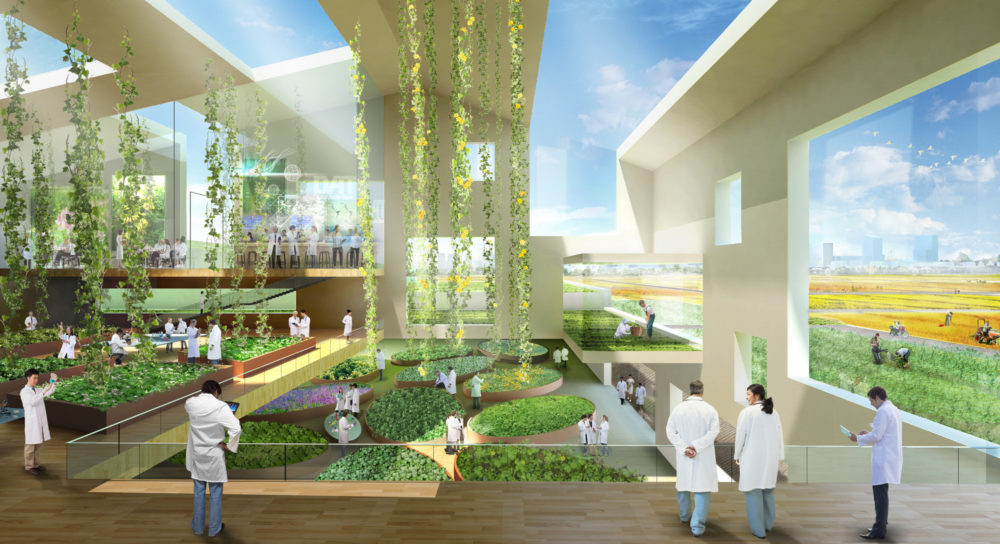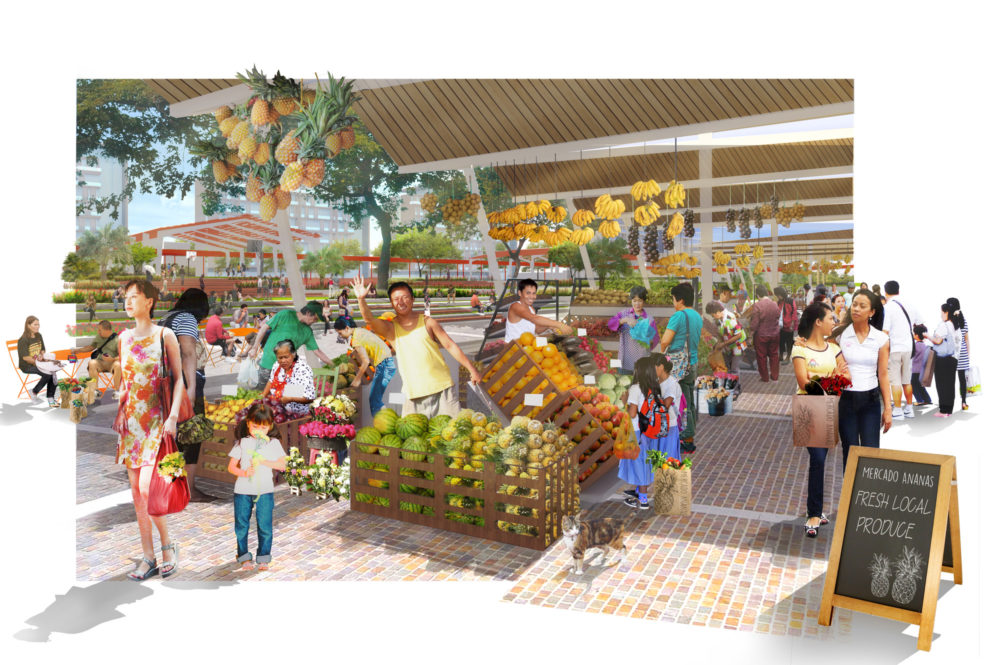A new model for urban farming for the world's largest agricultural producer and consumer: China
Sunqiao Urban Agricultural District
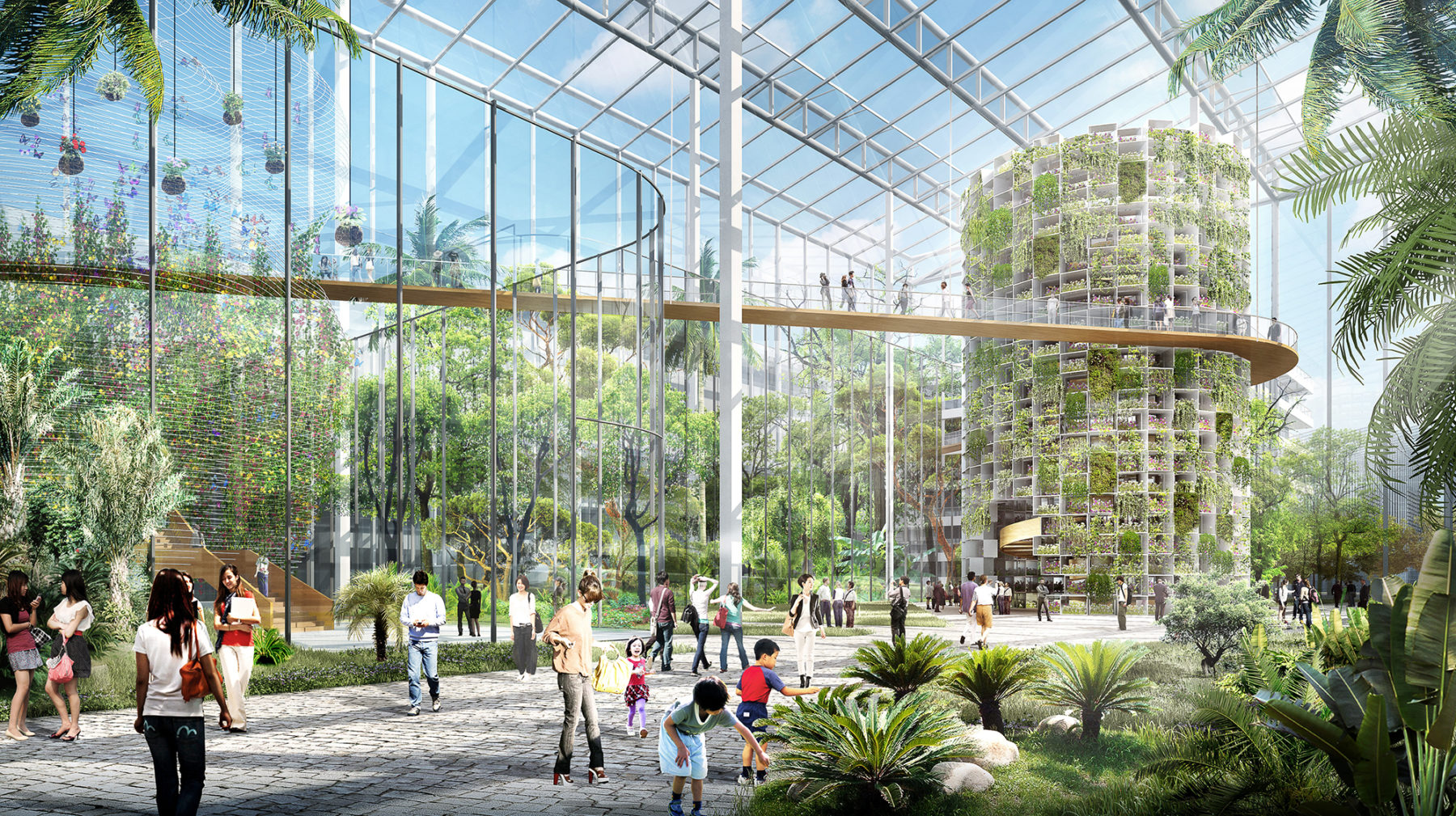
Sunqiao promotes a new paradigm of urban life, integrating agricultural production with research and civic amenities to create a socially-engaged and playful experience
Shanghai is home to nearly 24 million people. But over the last two decades, China has lost over 123,000 square kilometers of farmland to urbanization—a land area equivalent to nearly the entire state of Iowa. Of the arable land that remains, it is estimated by China’s own Ministry of Environmental Protection that one-sixth of this land—roughly 200,000 square kilometers—suffers from soil pollution.
As one of Asia’s most dynamic megacities, Shanghai is actively encouraging innovative solutions to provide food for the growing region. Unlike Western examples of large-scale corporate farms which are typically located great distances from cities, smaller scale agriculture dominates Shanghai’s peri-urban landscape. This progressive approach has historically allowed the growing metropolis to carefully manage agricultural resources, while also ensuring greater agricultural biodiversity. Like other cities in China, however, rapid growth is threatening this long-established system, resulting in a significant loss of agricultural land within city limits. Sunqiao—a new approach to urban agriculture—seeks to shift the paradigm.
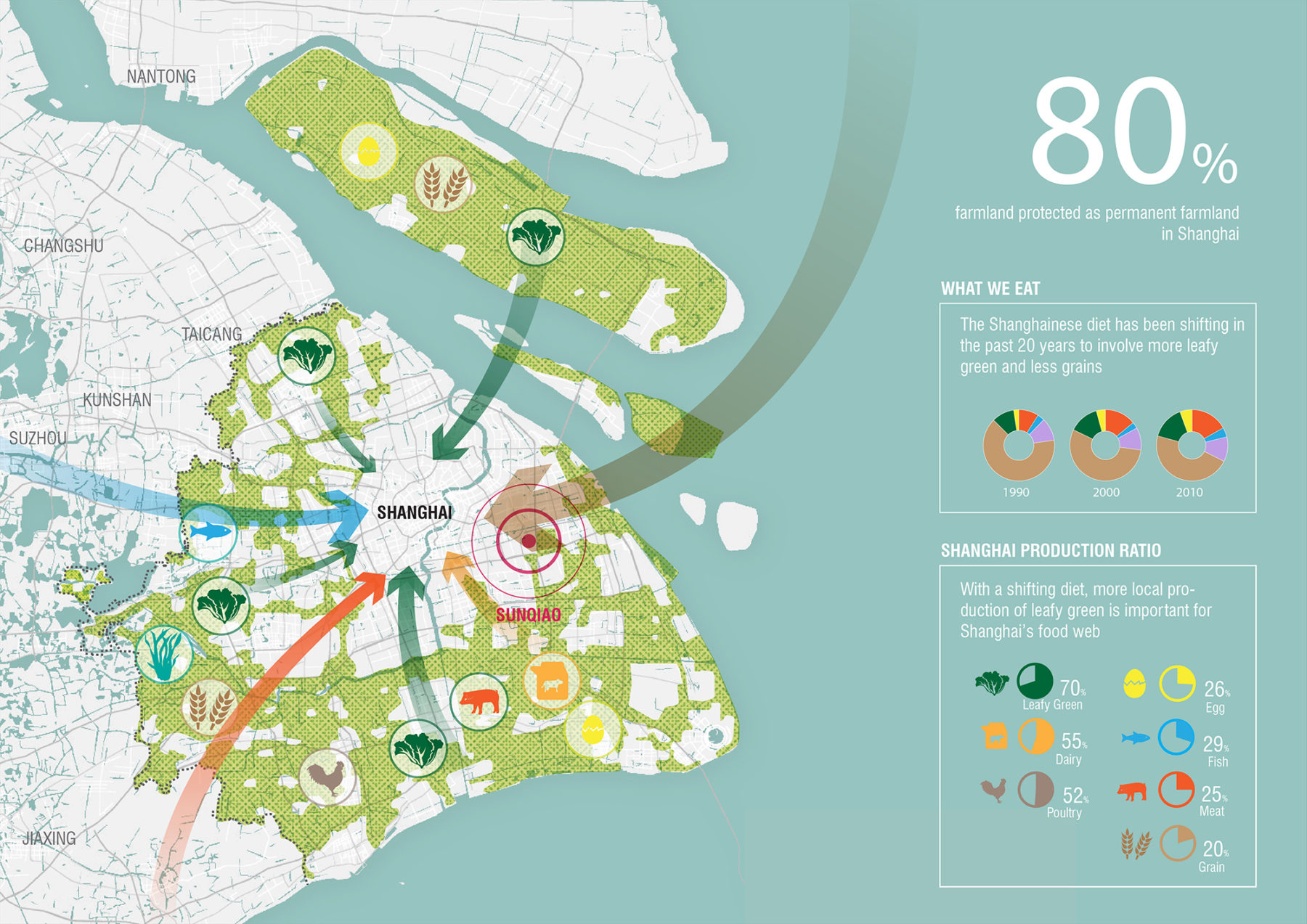
Infographic for Sunqiao Urban Agricultural District plans
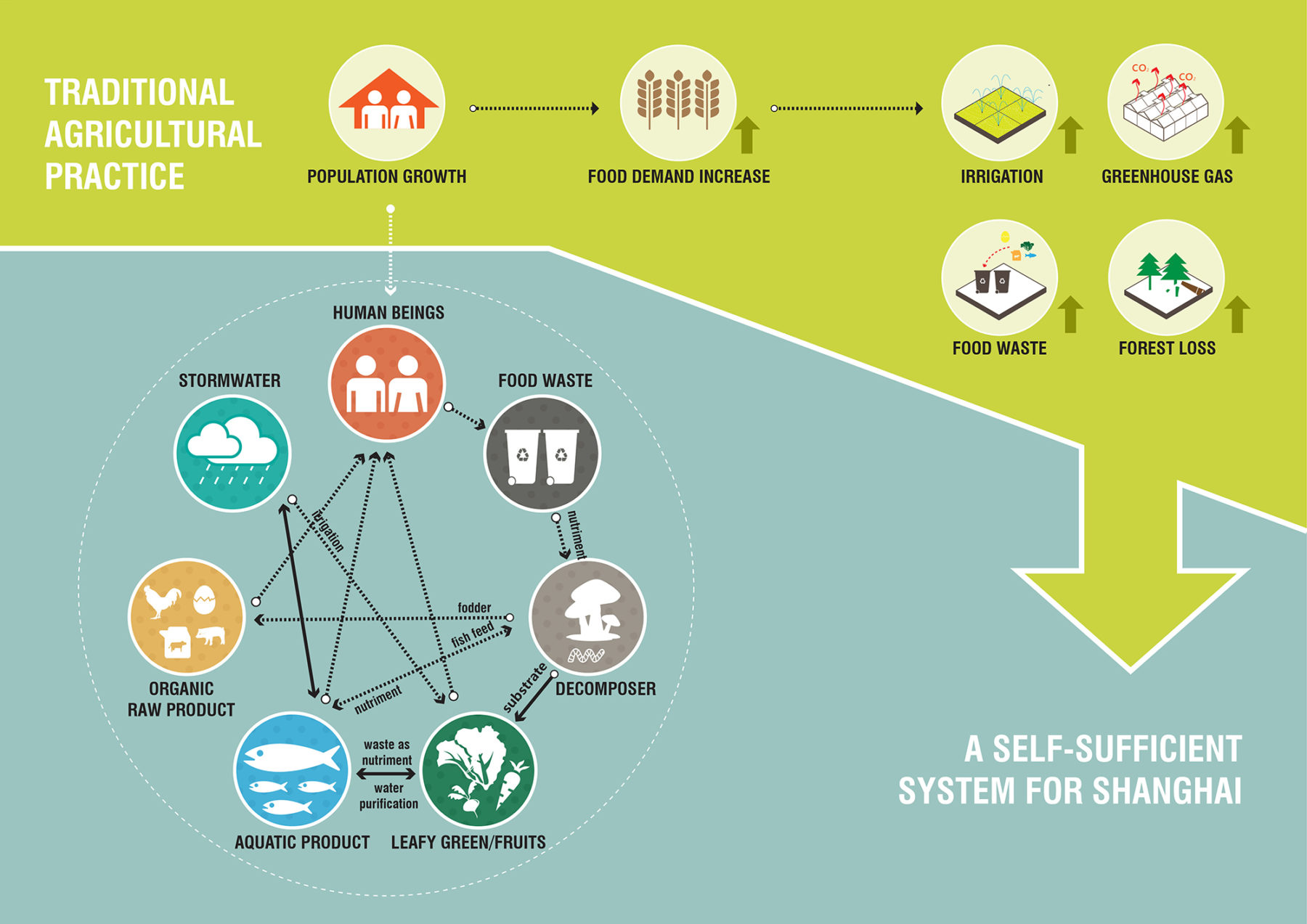
Seeking an integrated approach to bolstering Shanghai’s agricultural production with new capacity
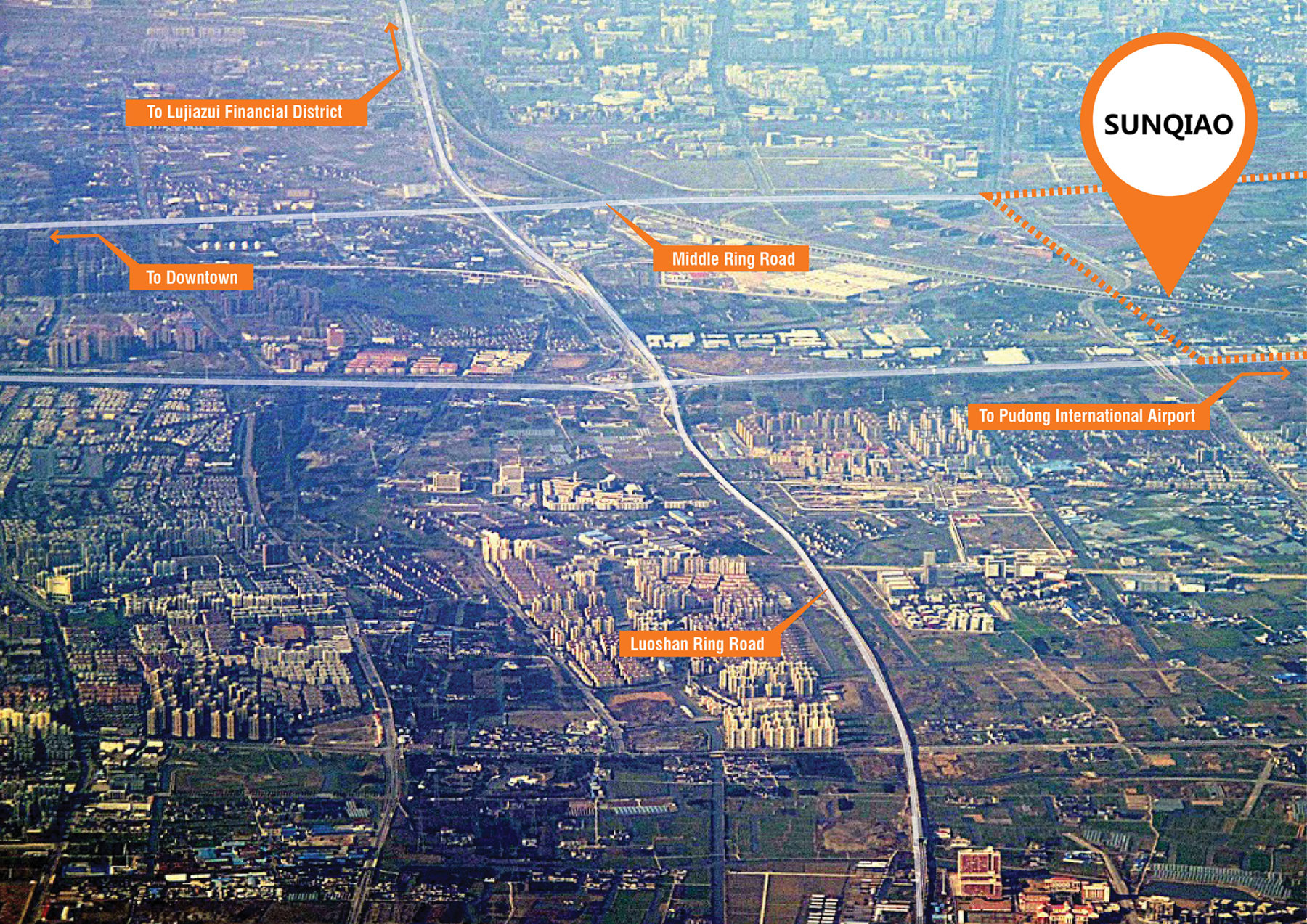
Located in Pudong District, midway between Shanghai’s main international airport and the city center, Sunqiao is one of the first comprehensive national agricultural zones in China approved by the central government
Located between Shanghai’s main international airport and the city center, Sunqiao illustrates that, like the city’s soaring skyscrapers, its farms are also going vertical. After 20 years of conventional agricultural production on the site, Shanghai is expanding the role of Sunqiao in its foodshed. The new plan for the district, slated to begin construction in 2017, focuses on the integration of vertical farming systems in conjunction with research and public outreach. The result is an interactive, playful, and socially-engaging experience that presents urban agriculture as a dynamic living laboratory for innovation and education.
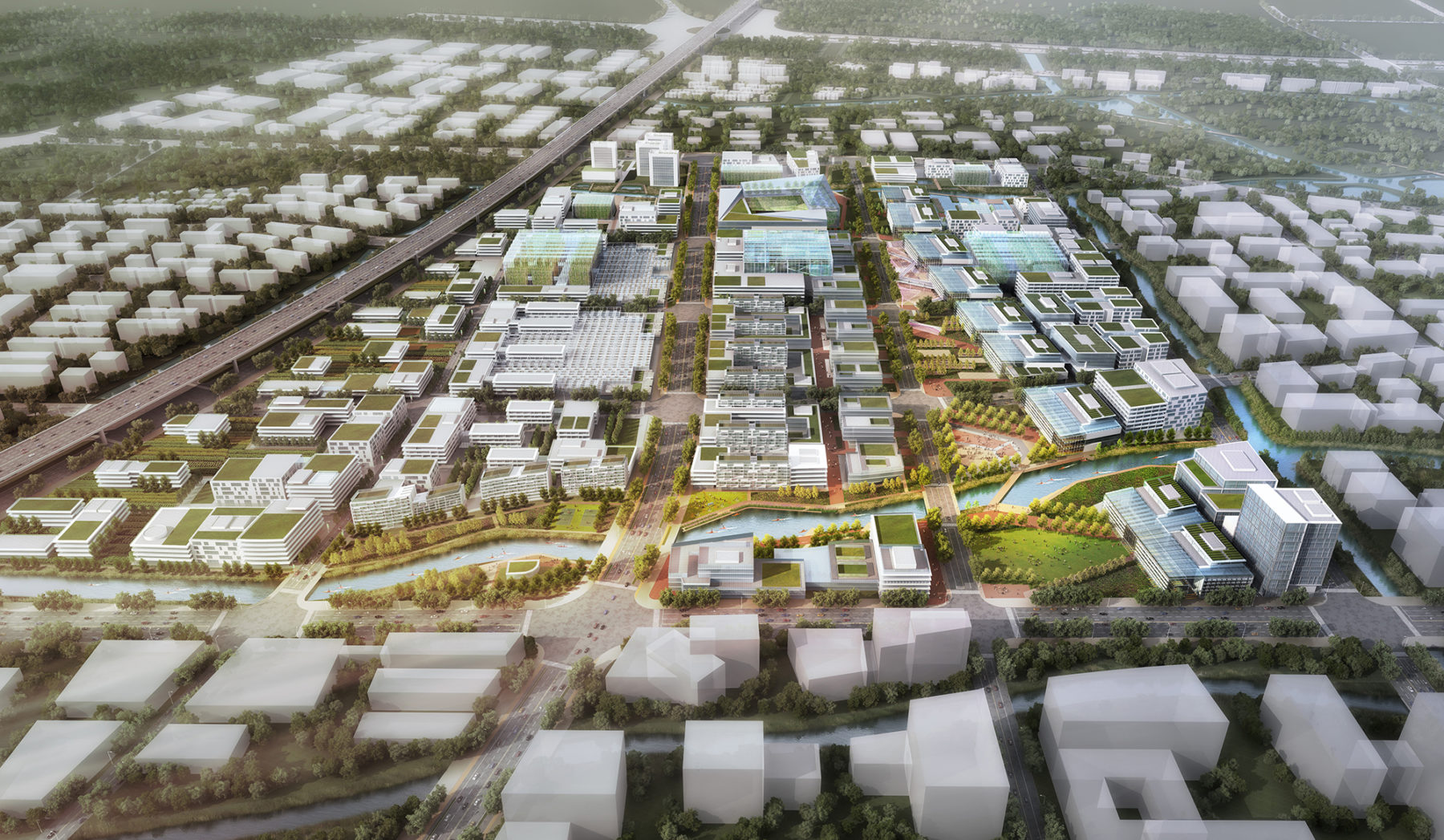
Overall framework perspective
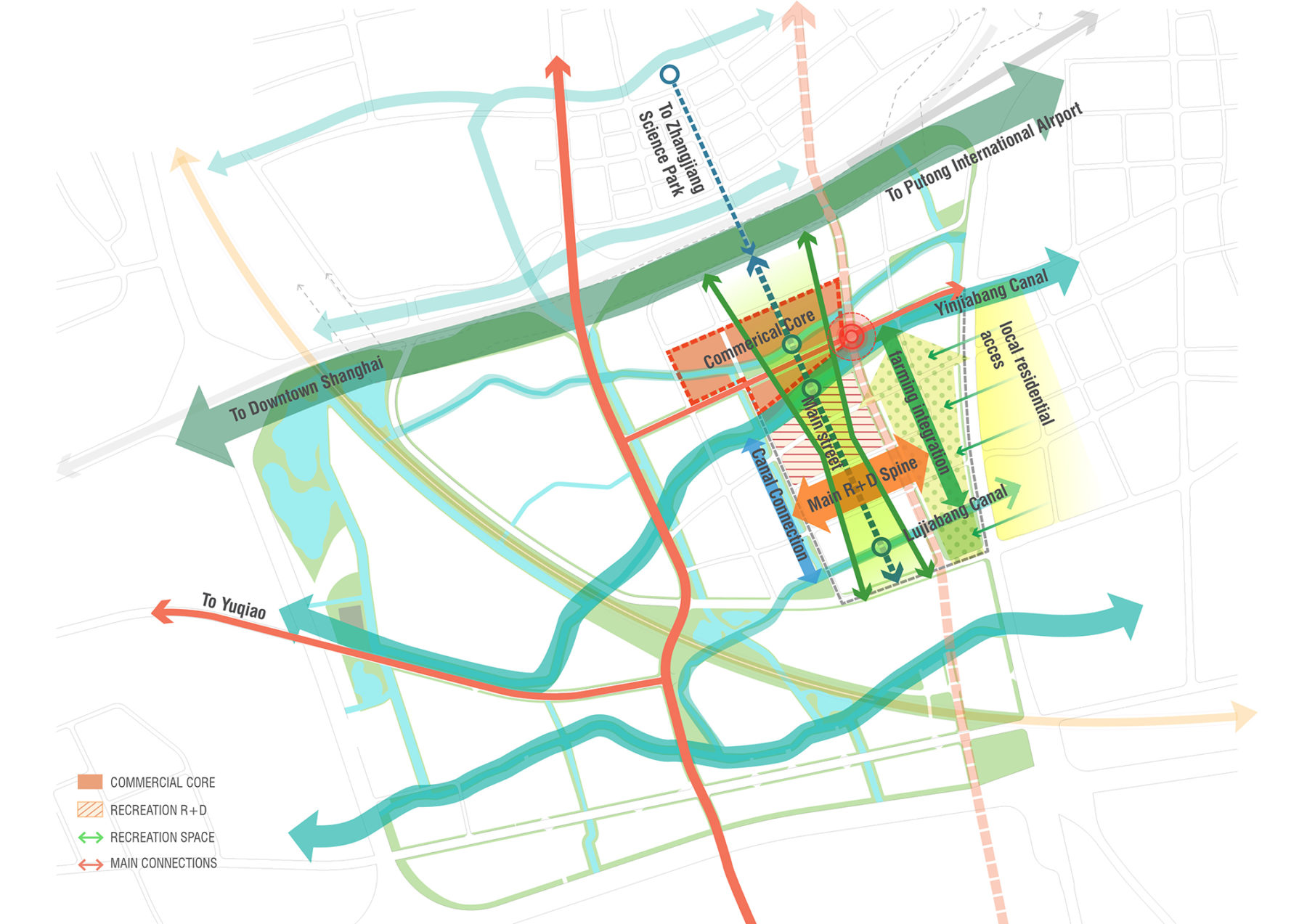
Agriculture is woven into residential and commercial life
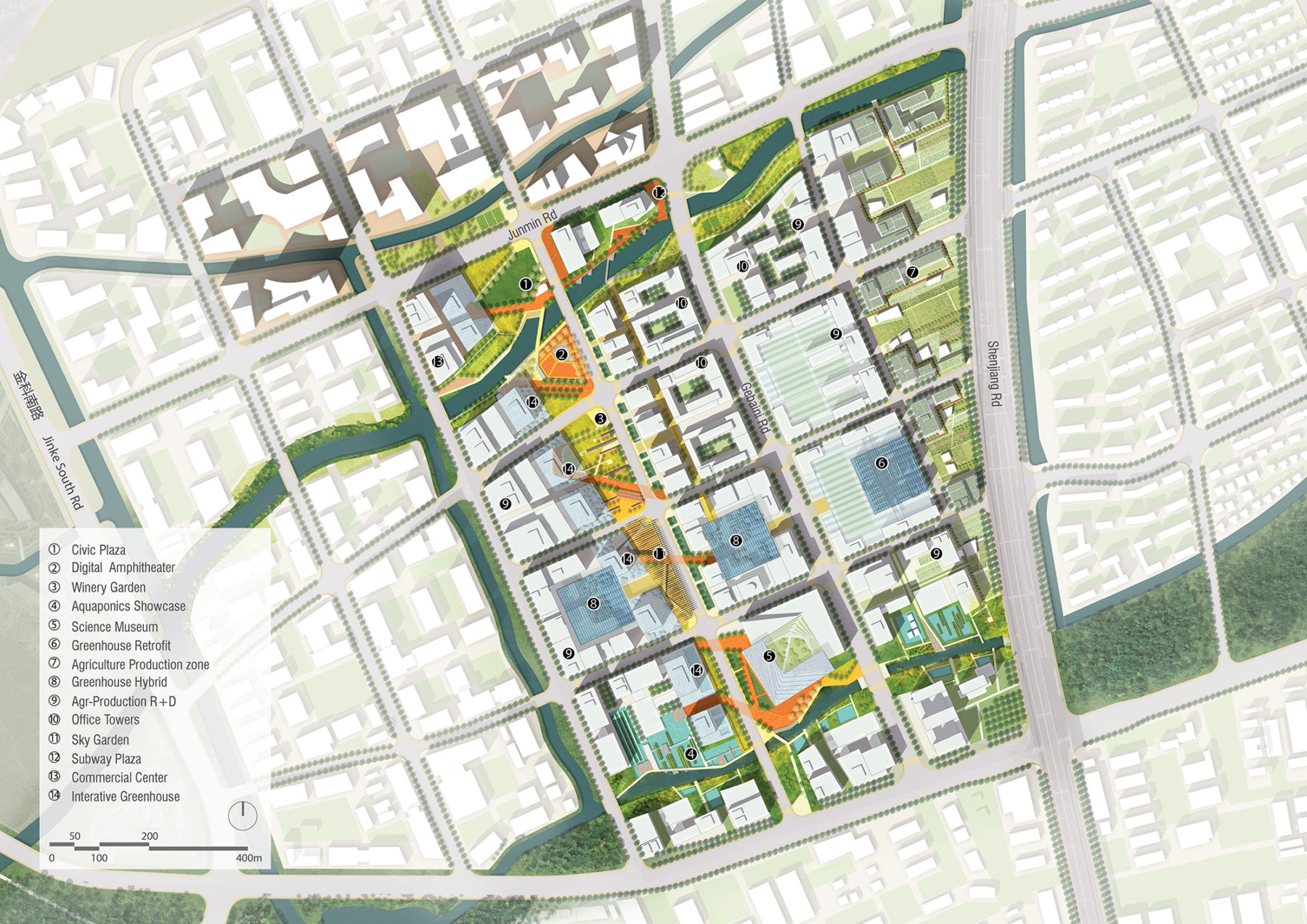
The overall framework
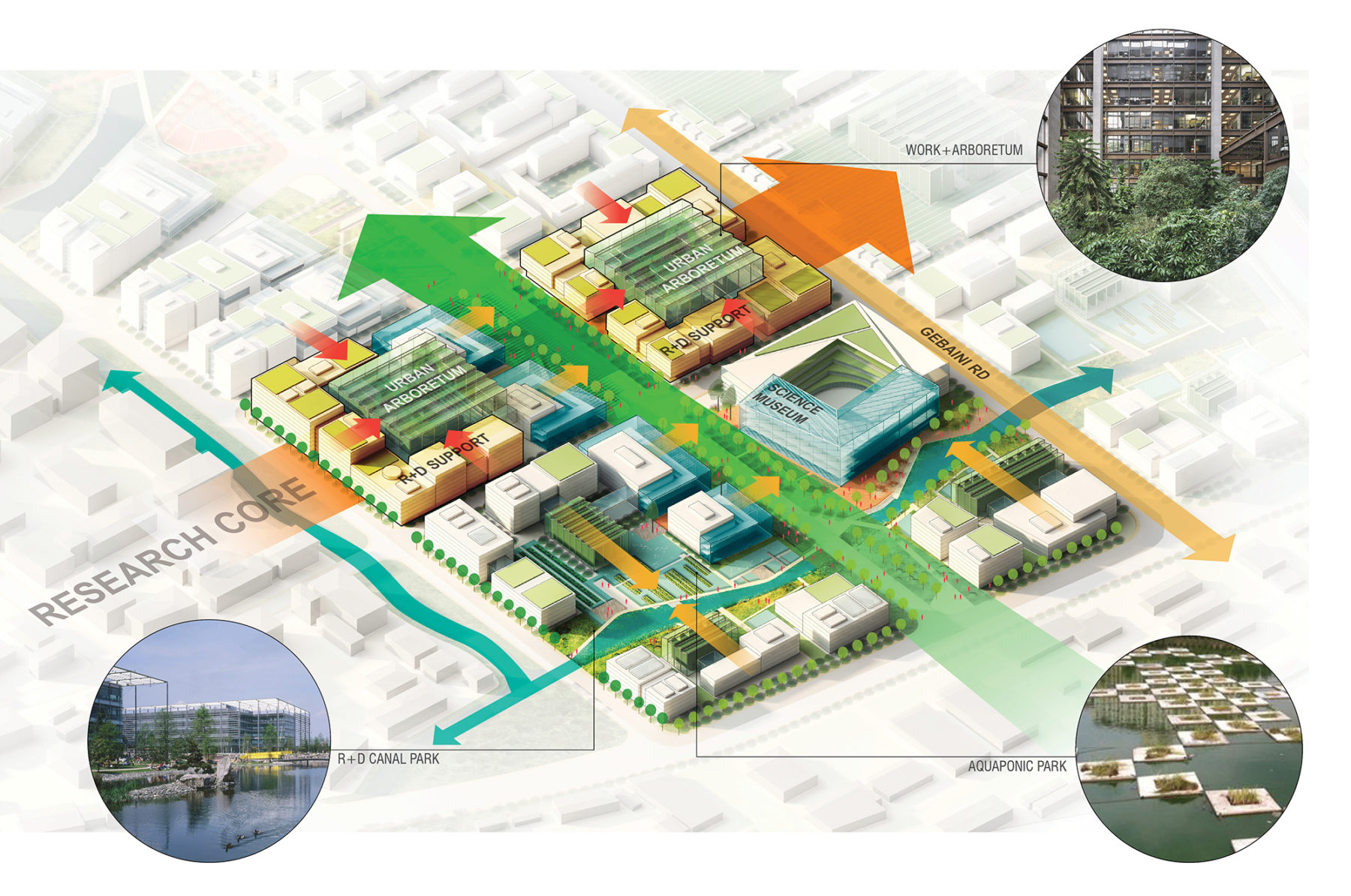
A highly interactive experience which merges new paradigms of production with public outreach
Shanghai is the ideal context for vertical farming. Like many global cities, land prices are high, which makes building up (rather than out) the economically prudent choice. Given that 56% of vegetables consumed in the Shanghainese diet consist of leafy greens—like spinach, kale, bok choi, watercress, and others—vertical farming is ripe with possibilities in this area of China. Leafy greens thrive in the simplest of setups and don’t need a lot of extra attention, so they are an excellent choice for hydroponic and aquaponic growing systems. They grow quickly and weigh little, both of which make them an economical and efficient option.
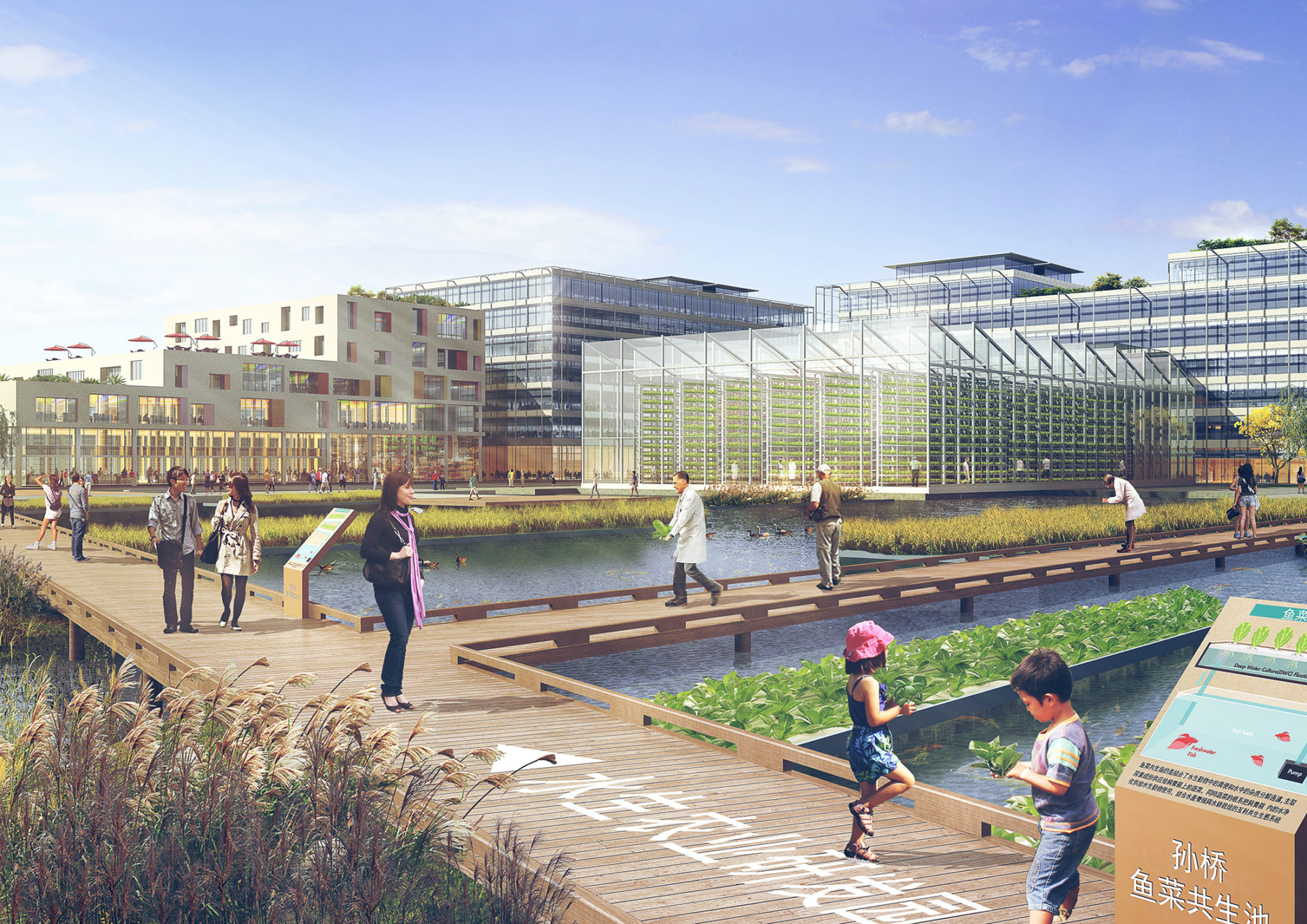
Canal Research Park integrate agriculture into a business district
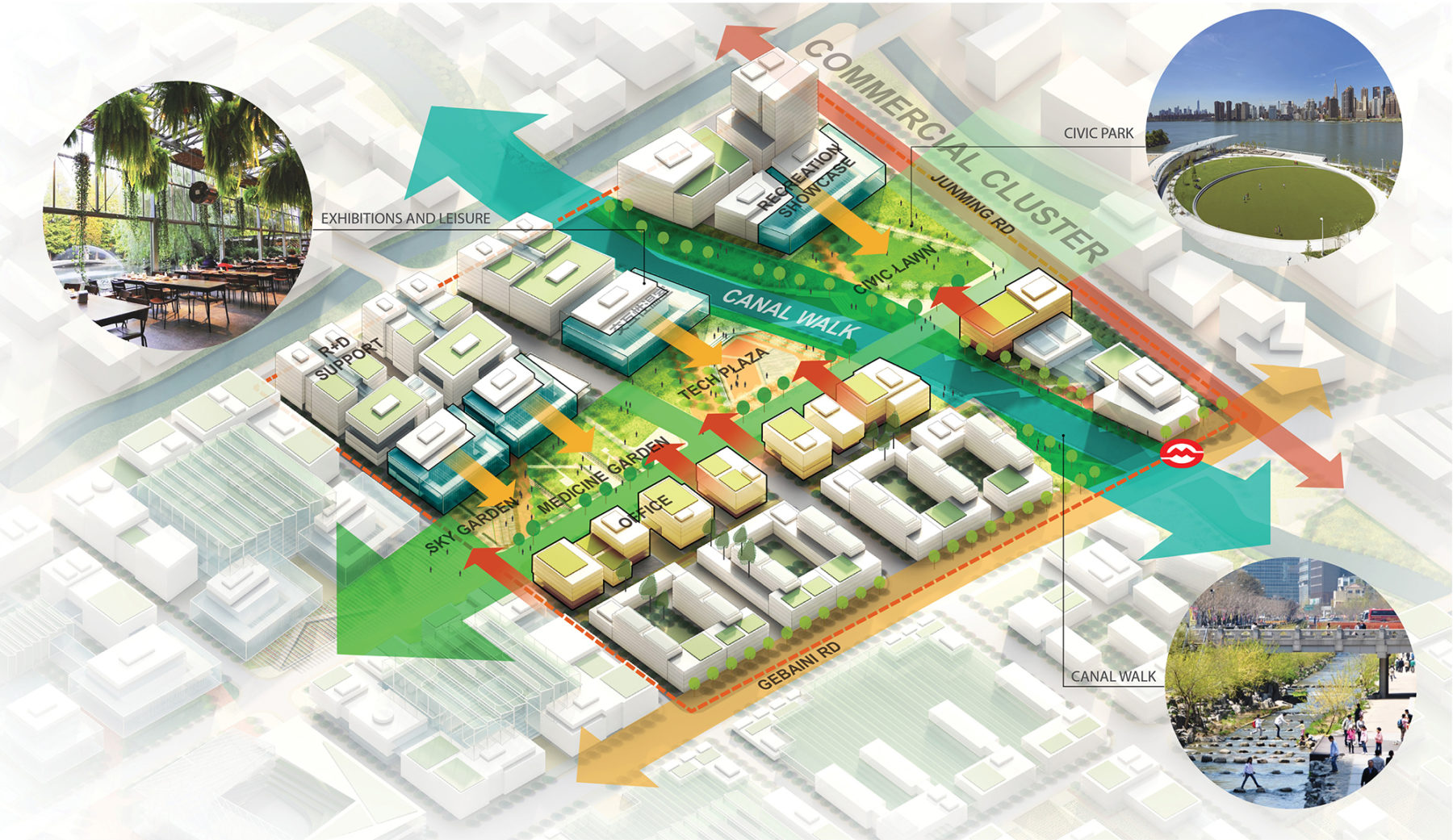
After 20 years of successful agricultural production, the city is expanding the role of Sunqiao in its food web, repositioning it as an innovative new district focused on creating forward-looking platforms for advanced agricultural research, start-ups, and exhibition
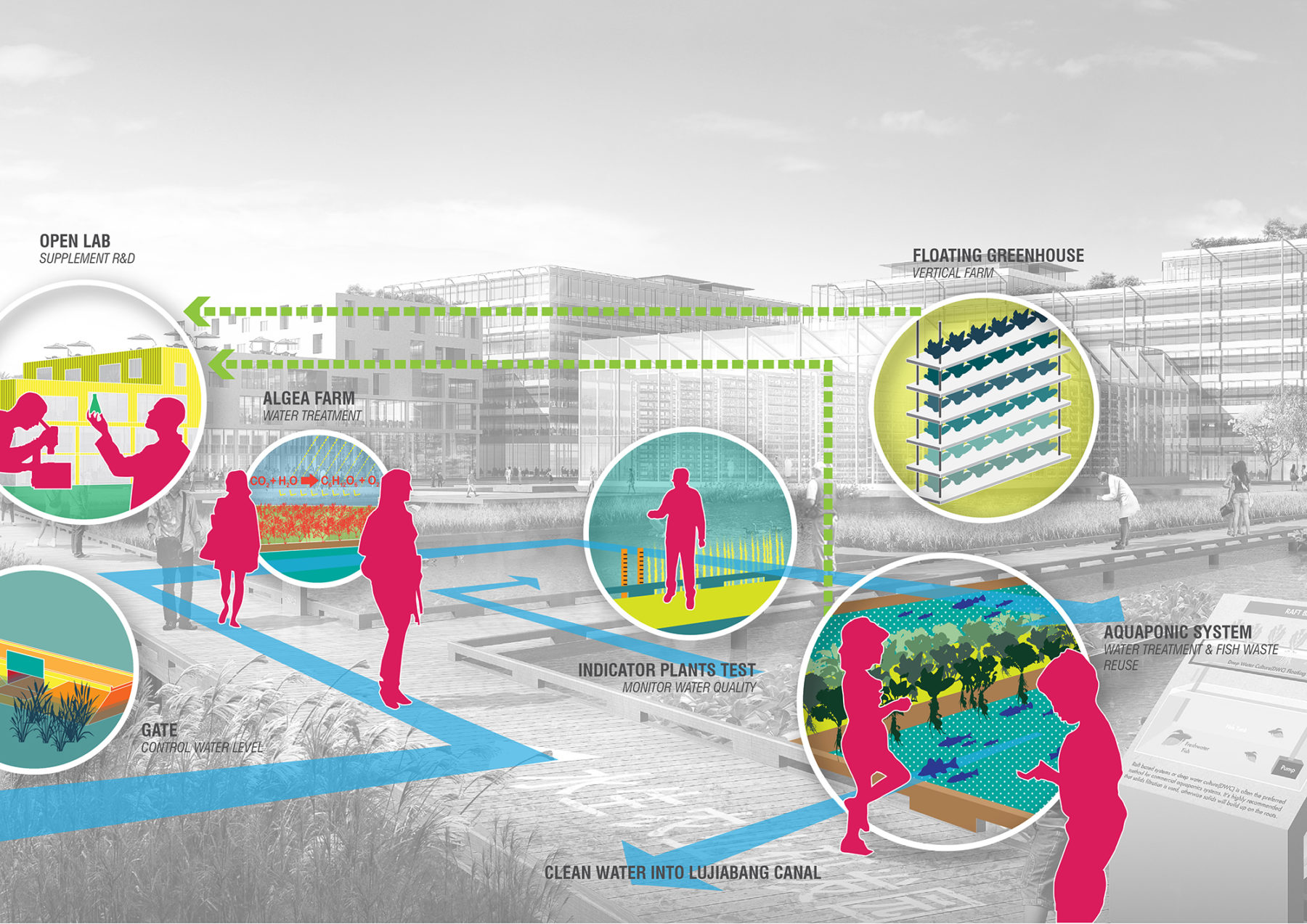
Integration water treatment system
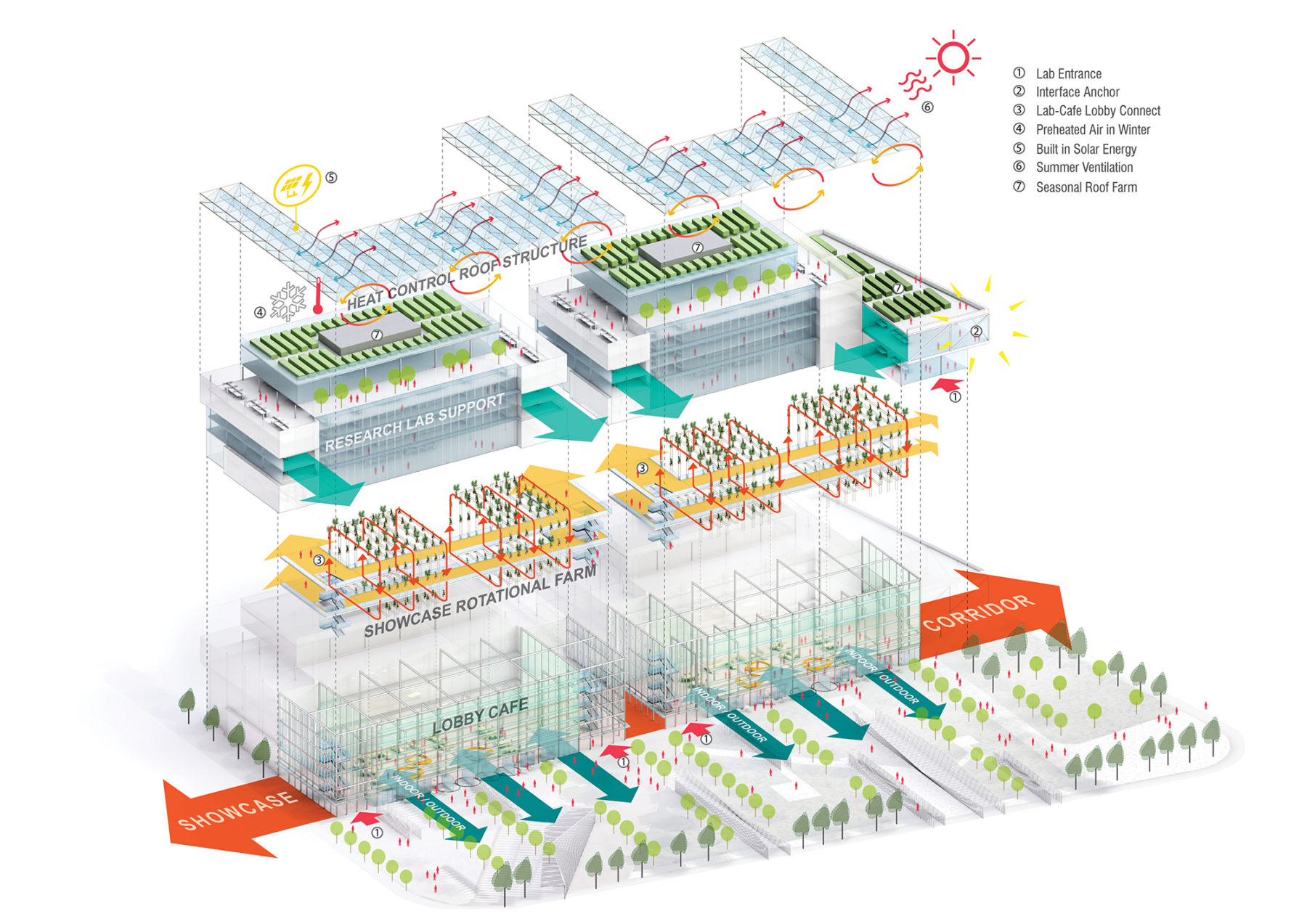
Modern greenhouse
After 20 years of successful agricultural production, the city is expanding the role of Sunqiao in its food web, repositioning it as an innovative new district focused on creating forward-looking platforms for advanced agricultural research, start-ups, and exhibition
Integration water treatment system
Modern greenhouse
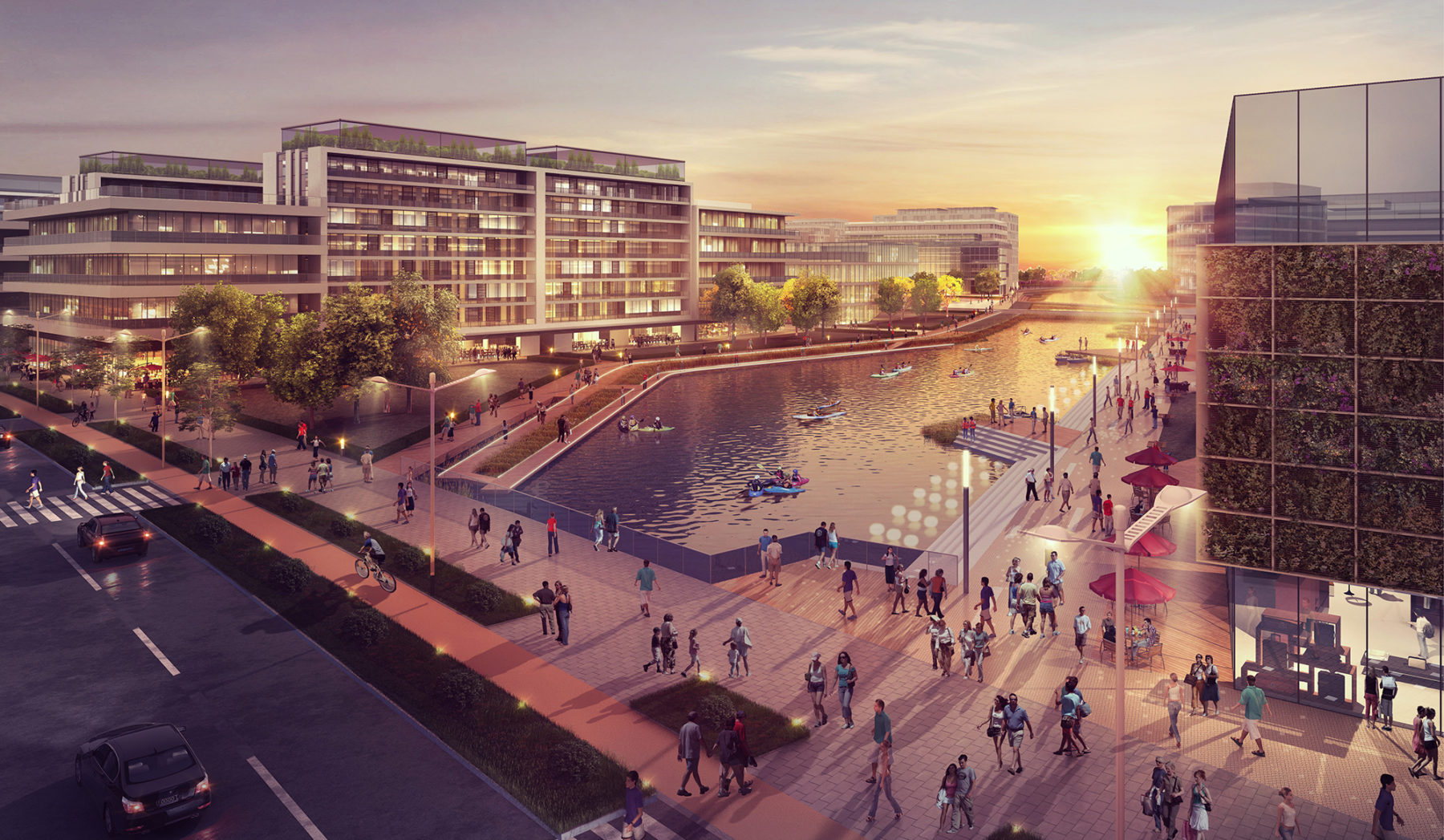
The new urban canal walk
While one goal is to position Shanghai as a leader in urban food production, Sunqiao incorporates more than just the creation of vertical food factories. Providing a robust public realm that merges indoor and outdoor agricultural experiences, the Sunqiao experiment presents a new idea for urban life by celebrating food production as one of the most important functions of a city. Sunqiao not only addresses Shanghai’s increasing demand for locally-sourced food, but also educates generations of urban children about where their food comes from. As cities continue to expand, we must continue to challenge the dichotomy between what is urban and what is rural.
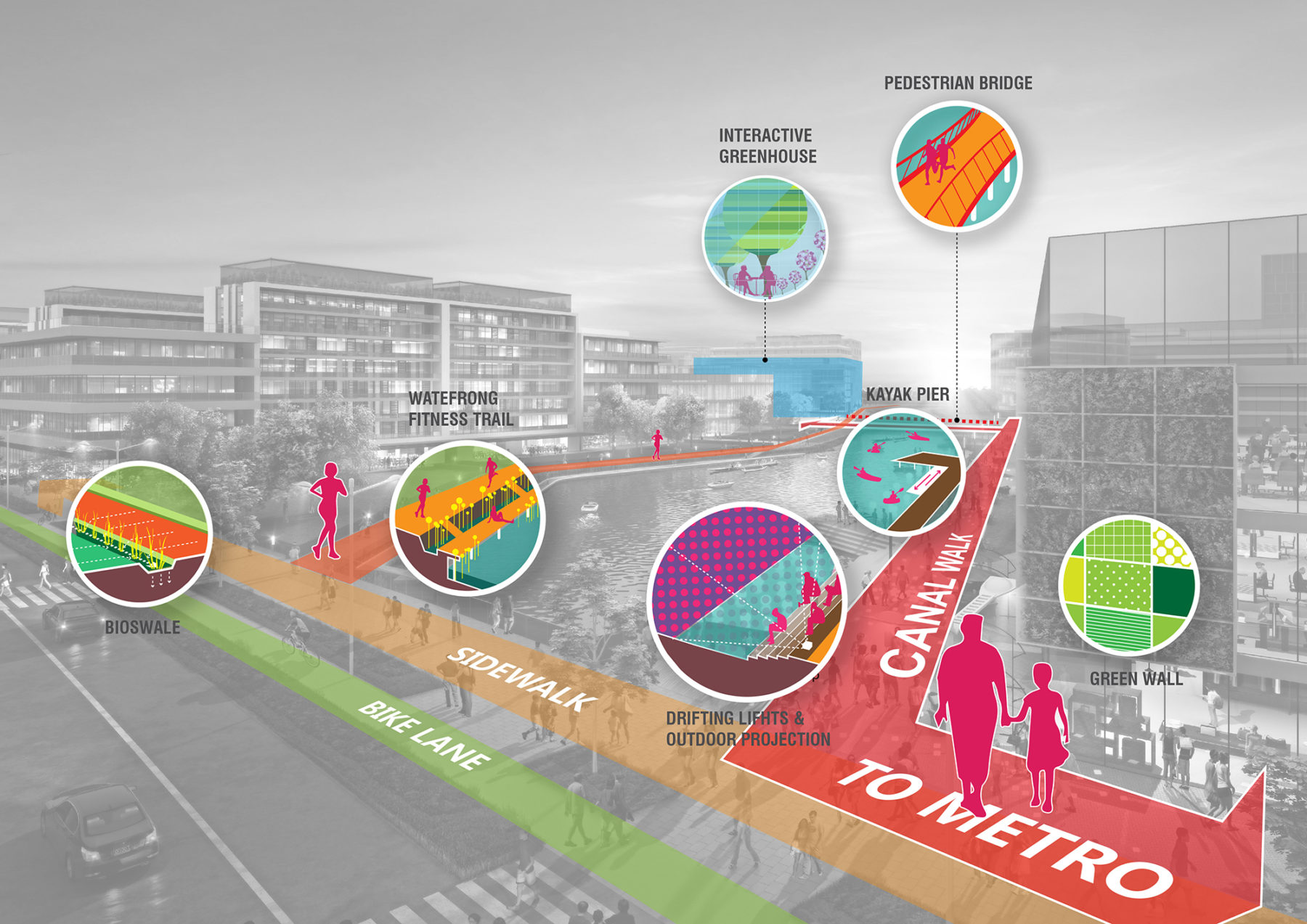
The plans envision a diverse waterfront experience
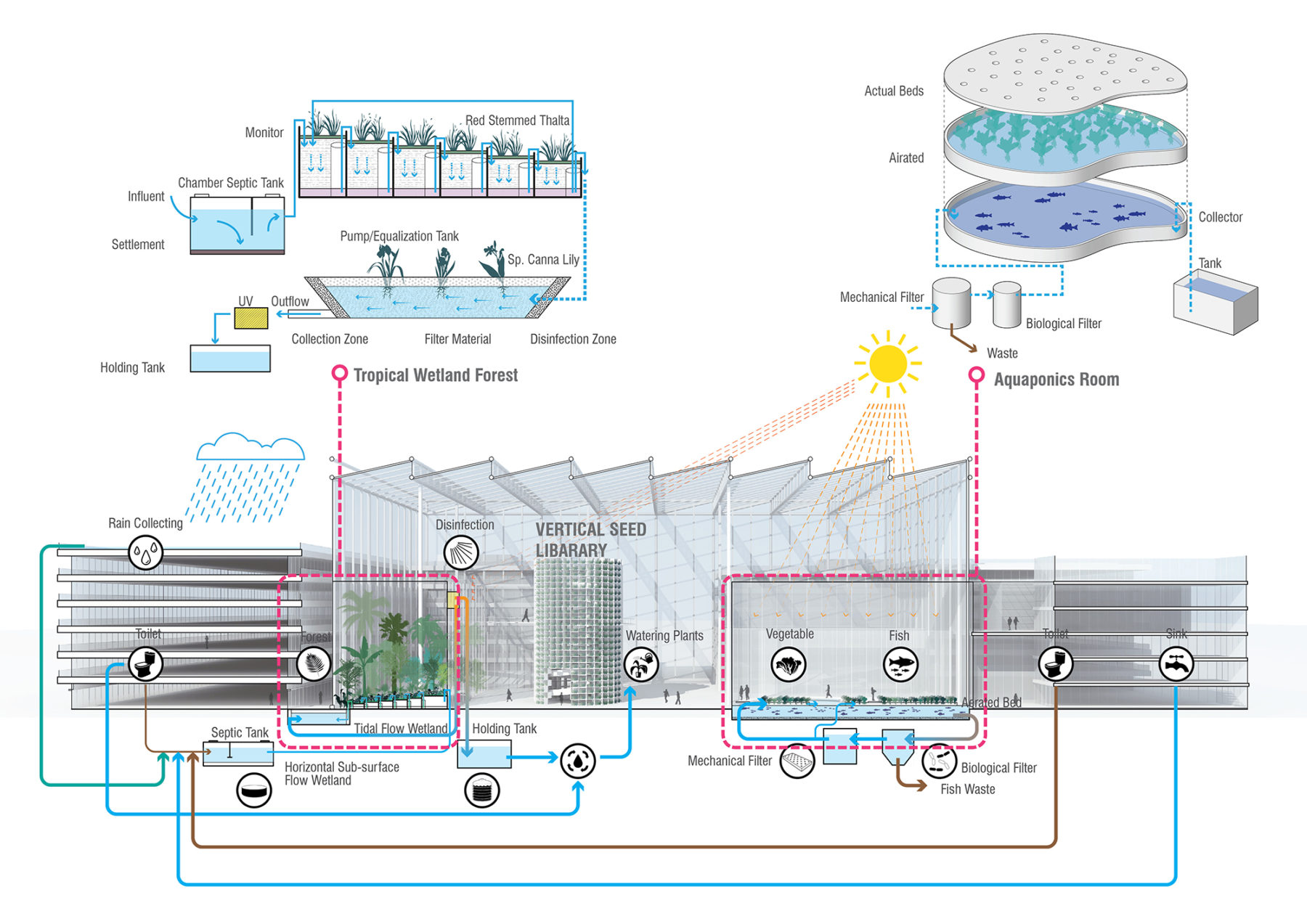
Integrated living system
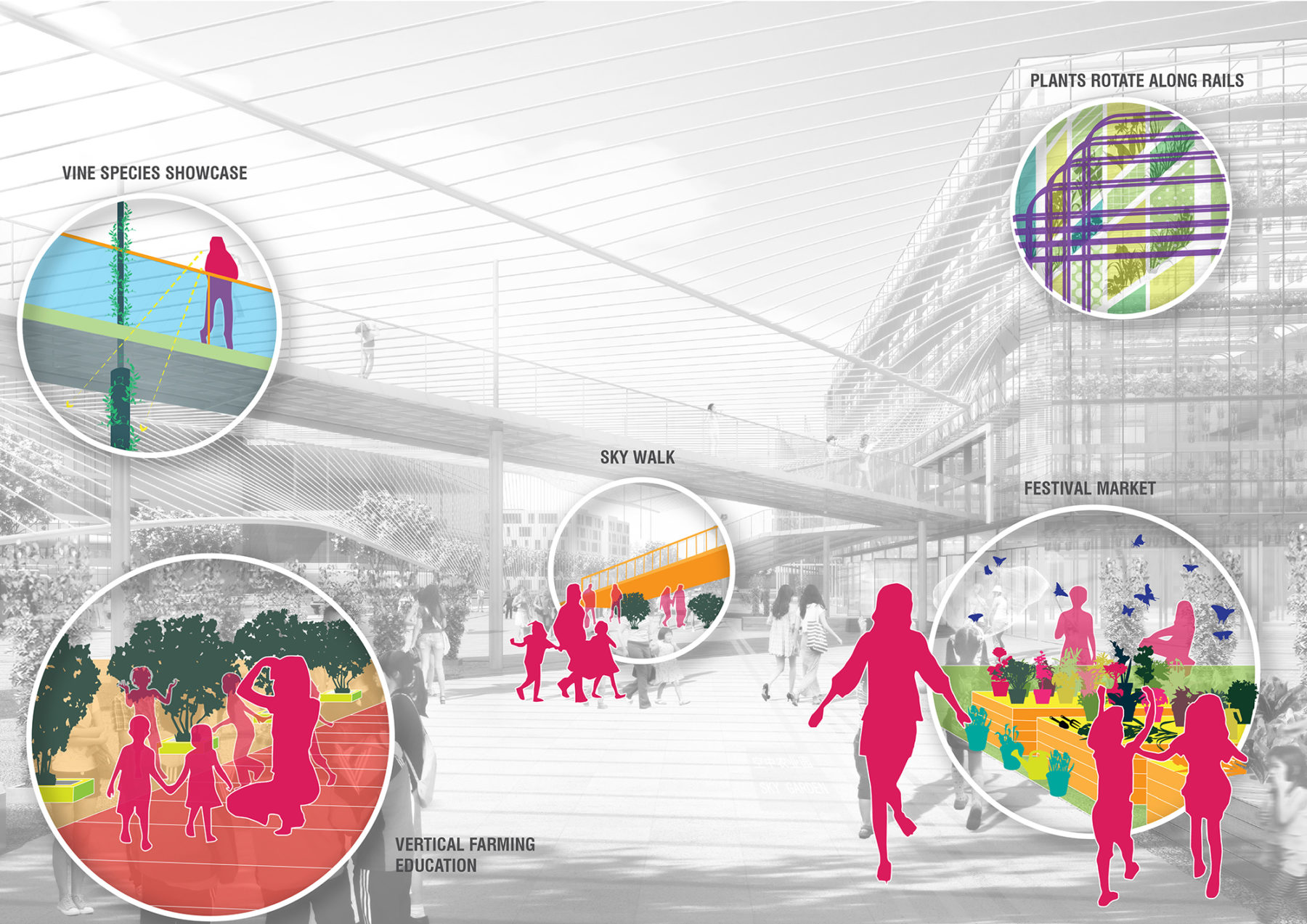
Showcase corridor
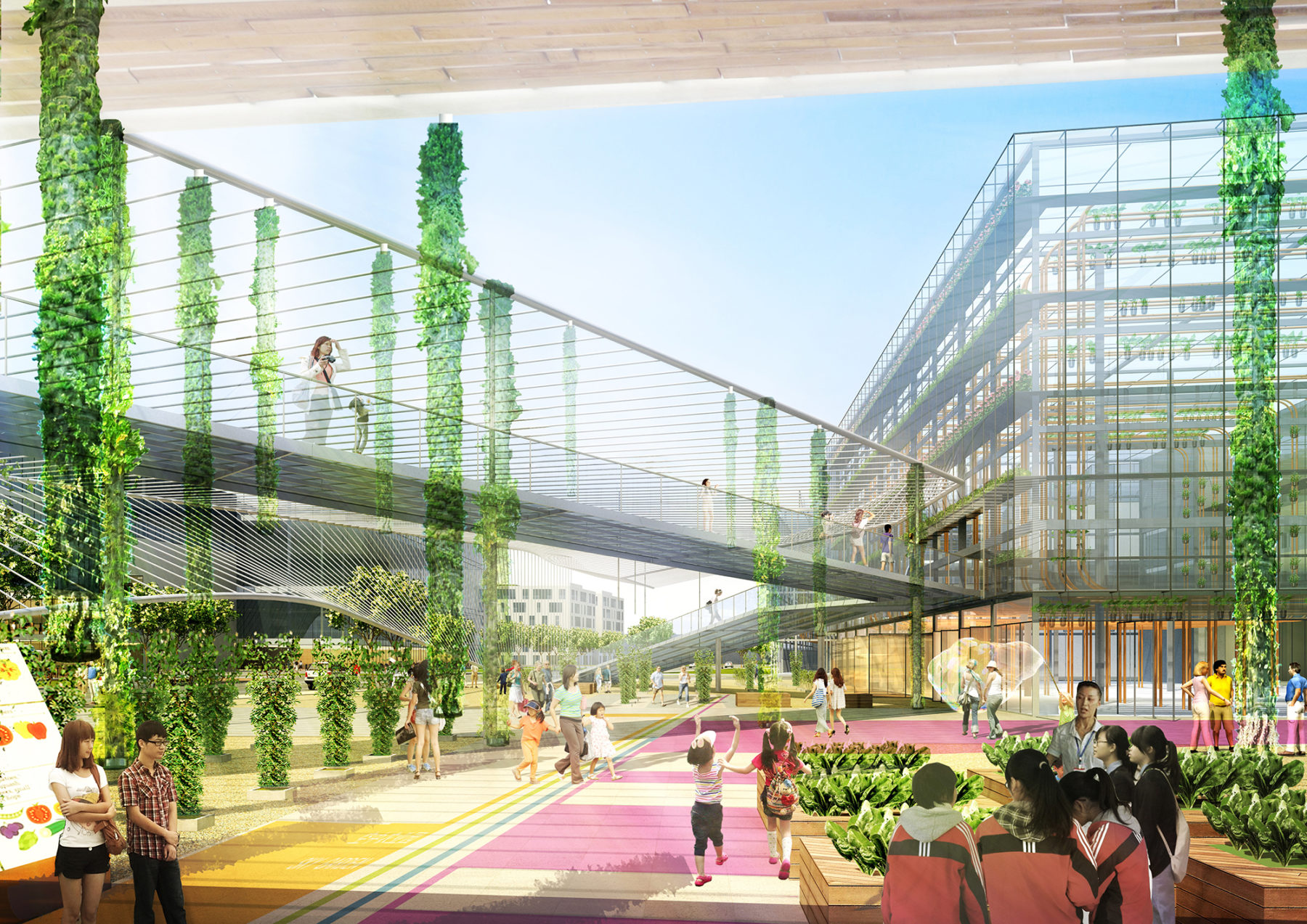
The plan features a vast amount of public outdoor space
For more information contact Michael Grove.

